![[Compaq]](../../images/compaq.gif)
![[Go to the documentation home page]](../../images/buttons/bn_site_home.gif)
![[How to order documentation]](../../images/buttons/bn_order_docs.gif)
![[Help on this site]](../../images/buttons/bn_site_help.gif)
![[How to contact us]](../../images/buttons/bn_comments.gif)
![[OpenVMS documentation]](../../images/ovmsdoc_sec_head.gif)
| Document revision date: 30 March 2001 | |
![[Compaq]](../../images/compaq.gif) |
![[Go to the documentation home page]](../../images/buttons/bn_site_home.gif)
![[How to order documentation]](../../images/buttons/bn_order_docs.gif)
![[Help on this site]](../../images/buttons/bn_site_help.gif)
![[How to contact us]](../../images/buttons/bn_comments.gif)
|
![[OpenVMS documentation]](../../images/ovmsdoc_sec_head.gif)
|
|
| Previous | Contents | Index |
Each high-level language supported by OpenVMS provides a mechanism for passing arguments to a procedure. The specifics of the mechanism and the terminology used, however, vary from one language to another. For specific information, refer to the appropriate high-level language user's guide.
OpenVMS system routines are external procedures that accept arguments. The argument list contains the parameters that are passed to the routine. Depending on the passing mechanisms for these parameters, the forms of the arguments contained in the argument list vary. As shown in Figures 18-7 and 18-8, argument entries labeled arg1 through argn are the actual parameters, which can be any of the following addresses or value:
Figure 18-7 Alpha Procedure Argument-Passing Mechanisms
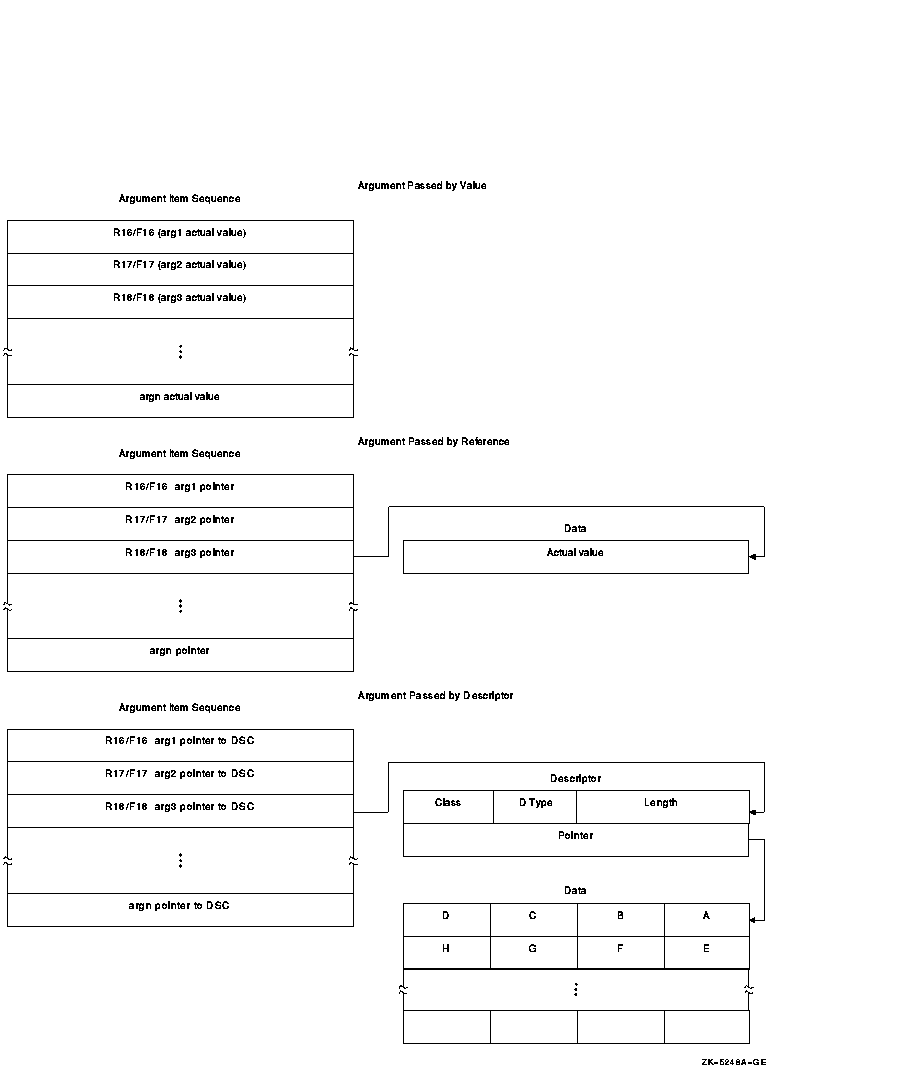
Figure 18-8 VAX Procedure Argument-Passing Mechanisms
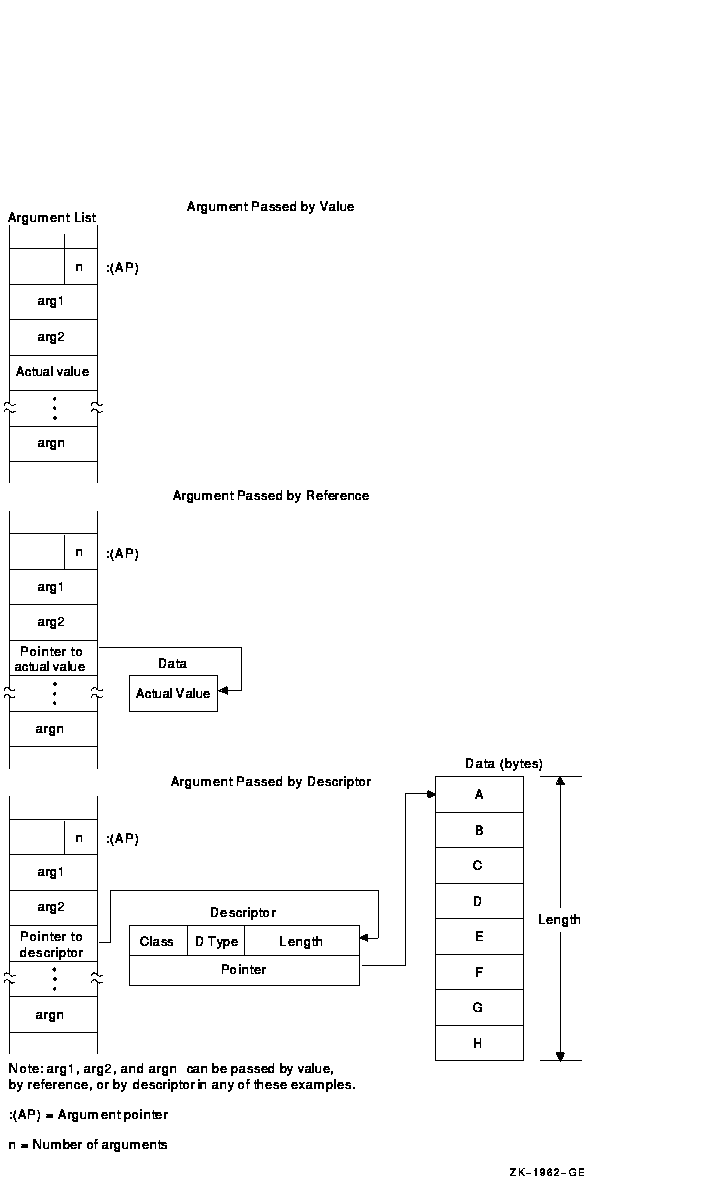
OpenVMS programming reference manuals provide a description of each
OpenVMS system routine that indicates how each argument is to be
passed. Phrases such as "an address" and "address of a
character string descriptor" identify reference and descriptor
arguments, respectively. Terms like "Boolean value,"
"number," "value," and "mask" indicate an
argument that is passed by value.
18.5.1 Passing Arguments by Value
When your program passes an argument using the by value mechanism, the argument list entry contains either the actual uninterpreted 32-bit VAX value or a 64-bit Alpha value (zero- or sign-extended) of the argument. For example, to pass the constant 100 by value, the calling program puts 100 directly in the argument list or sequence. For more information about passing 64-bit Alpha values, refer to Chapter 11.
All high-level languages (except C) require you to specify the by-value mechanism explicitly when you call a procedure that accepts an argument by value. For example, FORTRAN uses the %VAL built-in function, while COBOL uses the BY VALUE qualifier on the CALL [USING] statement.
A FORTRAN program calls a procedure using the by-value mechanism as follows:
INCLUDE '($SSDEF)'
CALL LIB$STOP (%VAL(SS$_INTOVF))
|
A BLISS program calls this procedure as follows:
LIB$SIGNAL (SS$_INTOVF)
|
The equivalent VAX MACRO code is as follows:
PUSHL #SS$_INTOVF ; Push longword by value
CALLS #1,G^LIB$SIGNAL ; Call LIB$SIGNAL
|
A C language program calls a procedure using the by-value mechanism as follows:
#include <starlet.h> /* Declare the function*/
.
.
enum cluster0
{
completion, breakdown, beginning
} event;
int status;
event = completion;
.
.
status = sys$setef(event); /* Set event flag */
|
When your program passes arguments using the by reference mechanism, the argument list entry contains the address of the location that contains the value of the argument. For example, if variable x is allocated at location 1000, the argument list entry will contain 1000, the address of the value of x.
On Alpha processors, the address is sign-extended from 32 bits to 64 bits.
Most languages (but not C) pass scalar data by reference by default. Therefore, if you simply specify x in the CALL statement or function invocation, the language automatically passes the value stored at the location allocated to x to the OpenVMS system routine.
A VAX BLISS program calls a procedure using the by-reference mechanism as follows:
LIB$FLT_UNDER (%REF(1))
|
The equivalent VAX MACRO code is as follows:
ONE: .LONG 1 ; Longword value 1
.
.
.
PUSHAL ONE ; Push address of longword
CALLS #1,G^LIB$FLT_UNDER ; Call LIB$FLT_UNDER
|
A C language program calls a procedure using the by-reference mechanism as follows:
/* This program shows how to call system service SYS$READEF. */
#include <ssdef.h>
#include <stdio.h>
#include <starlet.h> /* Declare the function */
main(void)
{
/* Longword that receives the status *
* of the event flag cluster */
unsigned cluster_status;
int return_status; /* Status: SYS$READEF */
/* Argument values for SYS$READEF */
enum cluster0
{
completion, breakdown, beginning
} event;
.
.
.
event = completion; /* Event flag in cluster 0 */
/* Obtain status of cluster 0. *
* Pass value of event and *
* address of cluster_status. */
return_status = SYS$READEF(event, &cluster_status);
/* Check for successful call */
if (return_status != SS$WASCLR && return_status != SS$WASSSET)
{
/* Handle the error here. */
.
.
.
}
else
{
/* Check bits of interest in cluster_status here. */
.
.
.
}
}
|
When a procedure specifies that an argument is passed by descriptor, the argument list entry must contain the address of a descriptor for the argument. For more information about OpenVMS Alpha 64-bit descriptors, refer to Chapter 11.
On Alpha processors, the address is sign-extended from 32 bits to 64 bits.
This mechanism is used to pass more complicated data. For both Alpha and VAX systems, a descriptor includes at least the following fields:
| Symbol | Description |
|---|---|
| DSC$W_LENGTH | Length of data (or DSC$W_MAXSTRLEN, maximum length, for varying strings) |
| DSC$B_DTYPE | Data type |
| DSC$B_CLASS | Descriptor class code |
| DSC$A_POINTER | Address at which the data begins |
The OpenVMS Calling Standard describes these fields in greater detail.
OpenVMS high-level languages include extensions for passing arguments by descriptor. When you specify by descriptor in these languages, the compiler creates the descriptor, defines its fields, and passes the address of the descriptor to the OpenVMS system routine. In some languages, by descriptor is the default passing mechanism for certain types of arguments, such as character strings. For example, the default mechanism for passing strings in BASIC is by descriptor.
100 COMMON STRING GREETING = 30
200 CALL LIB$PUT_SCREEN(GREETING)
|
The default mechanism for passing strings in COBOL, however, is by reference. Therefore, when passing a string argument to an OpenVMS system routine from a COBOL program, you must specify BY DESCRIPTOR for the string argument in the CALL statement.
CALL LIB$PUT_OUTPUT USING BY DESCRIPTOR GREETING
|
In VAX MACRO or BLISS, you must define the descriptor's fields explicitly and push its address onto the stack. Following is the VAX MACRO code that corresponds to the previous examples.
MSGDSC: .WORD LEN ; DESCRIPTOR: DSC$W_LENGTH
.BYTE DSC$K_DTYPE_T ; DSC$B_DTYPE
.BYTE DSC$K_CLASS_S ; DSC$B_CLASS
.ADDRESS MSG ; DSC$A_POINTER
MSG: .ASCII/Hello/ ; String itself
LEN = .-MSG ; Define the length of the string
.ENTRY EX1,^M<>
PUSHAQ MSGDSC ; Push address of descriptor
CALLS #1,G^LIB$PUT_OUTPUT ; Output the string
RET
.END EX1
|
The equivalent BLISS code looks like this:
MODULE BLISS1 (MAIN = BLISS1, ! Example of calling LIB$PUT_OUTPUT
IDENT = '1-001',
ADDRESSING_MODE(EXTERNAL = GENERAL)) =
BEGIN
EXTERNAL ROUTINE
LIB$STOP, ! Stop execution via signaling
LIB$PUT_OUTPUT; ! Put a line to SYS$OUTPUT
FORWARD ROUTINE
BLISS1 : NOVALUE;
LIBRARY 'SYS$LIBRARY:STARLET.L32';
ROUTINE BLISS1 ! Routine
: NOVALUE =
BEGIN
!+
! Allocate the necessary local storage.
!-
LOCAL
STATUS, ! Return status
MSG_DESC : BLOCK [8, BYTE]; ! Message descriptor
BIND
MSG = UPLIT('HELLO');
!+
! Initialize the string descriptor.
!-
MSG_DESC [DSC$B_CLASS] = DSC$K_CLASS_S;
MSG_DESC [DSC$B_DTYPE] = DSC$K_DTYPE_T;
MSG_DESC [DSC$W_LENGTH] = 5;
MSG_DESC [DSC$A_POINTER] = MSG;
!+
! Put out the string. Test the return status.
! If it is not a success, then signal the RMS error.
!-
STATUS = LIB$PUT_OUTPUT(MSG_DESC);
IF NOT .STATUS THEN LIB$STOP(.STATUS);
END; ! End of routine BLISS1
END ! End of module BLISS1
ELUDOM
|
A C language program calls a procedure using the by-descriptor mechanism as follows:
/* This program shows a call to system service SYS$SETPRN. */
#include <ssdef.h>
#include <stdio.h>
/* Define structures for descriptors */
#include <descrip.h>
#include starlet.h /* Declare the function */
int main(void)
{
int ret; /* Define return status of SYS$SETPRN */
struct dsc$descriptor_s name_desc; /* Name the descriptor */
char *name = "NEWPROC"; /* Define new process name */
.
.
.
name_desc.dsc$w_length = strlen(name); /* Length of name without *
* null terminator */
name_desc.dsc$a_pointer = name; /* Put address of shortened string *
* in descriptor */
name_desc.dsc$b_class = DSC$K_CLASS_S; /* String descriptor class */
name_desc.dsc$b_dtype = DSC$K_DTYPE_T; /* Data type: ASCII string */
.
.
.
ret = sys$setprn(&name_desc);
if (ret != SS$_NORMAL) /* Test return status */
fprintf(stderr, "Failed to set process name\n"),
exit(ret);
.
.
.
}
|
When you are passing an input scalar value to an OpenVMS system
routine, you usually pass it either by reference or by value. You
usually pass output scalar arguments by reference to OpenVMS system
routines. An output scalar argument is the address of a location where
some scalar output of the routine will be stored.
18.7 Passing Arrays as Arguments
Arrays are passed to OpenVMS system routines by reference or by descriptor.
Sometimes the routine knows the length and dimensions of the array to be received, as in the case of the table passed to LIB$CRC_TABLE. Arrays such as this are normally passed by reference.
In other cases, the routine actually analyzes and operates on the input
array. The routine does not necessarily know the length or dimensions
of such an input array, so a descriptor is necessary to provide the
information the routine needs to describe the array accurately.
18.8 Passing Strings as Arguments
Strings are passed by descriptor to OpenVMS system routines. Table 18-5 lists the string-passing descriptors recognized by a system routine.
| Descriptor Function | Descriptor Class Code | Numeric Value |
|---|---|---|
| Unspecified | DSC$K_CLASS_Z | 0 |
| Fixed length (string/scalar) | DSC$K_CLASS_S | 1 |
| Dynamic | DSC$K_CLASS_D | 2 |
| Array | DSC$K_CLASS_A | 4 |
| Scaled decimal | DSC$K_CLASS_SD | 9 |
| Noncontiguous array | DSC$K_CLASS_NCA | 10 |
| Varying length | DSC$K_CLASS_VS | 11 |
An OpenVMS system routine writes strings according to the following types of semantics:
Some combinations of descriptor class and data type are not permitted, either because they are not meaningful or because the calling standard does not recognize them. Possibly, the same function can be performed with more than one combination. This section describes the restrictions on the combinations of descriptor classes and data types. These restrictions help to keep procedure interfaces simple by allowing a procedure to accept a limited set of argument formats without sacrificing functional flexibility.
The tables in Figures 18-9, 18-10, and 18-11 show all possible combinations of descriptor classes and data types. For example, Figure 18-9 shows that your program can pass an argument to an OpenVMS system routine whose descriptor class is DSC$K_CLASS_A (array descriptor) and whose data type is unsigned byte (DSC$K_DTYPE_BU). The calling standard does not permit your program to pass an argument whose descriptor class is DSC$K_CLASS_D (dynamic string) and whose data type is unsigned byte.
A descriptor with data type DSC$K_DTYPE_DSC (24) points to a descriptor that has class DSC$K_CLASS_D (2) and data type DSC$K_DTYPE_T (14). All other class and data type combinations in the target descriptor are reserved for future definition in the standard.
The scale factor for DSC$K_CLASS_SD is always a decimal data type. It does not vary with the data type of the data described by the descriptor.
For DSC$K_CLASS_UBS and DSC$K_CLASS_UBA, the length field specifies the length of the data field in bits. For example, if the data type is unsigned word (DSC$K_DTYPE_WU), DSC$W_LENGTH equals 16.
Figure 18-9 Atomic Data Types and Descriptor Classes
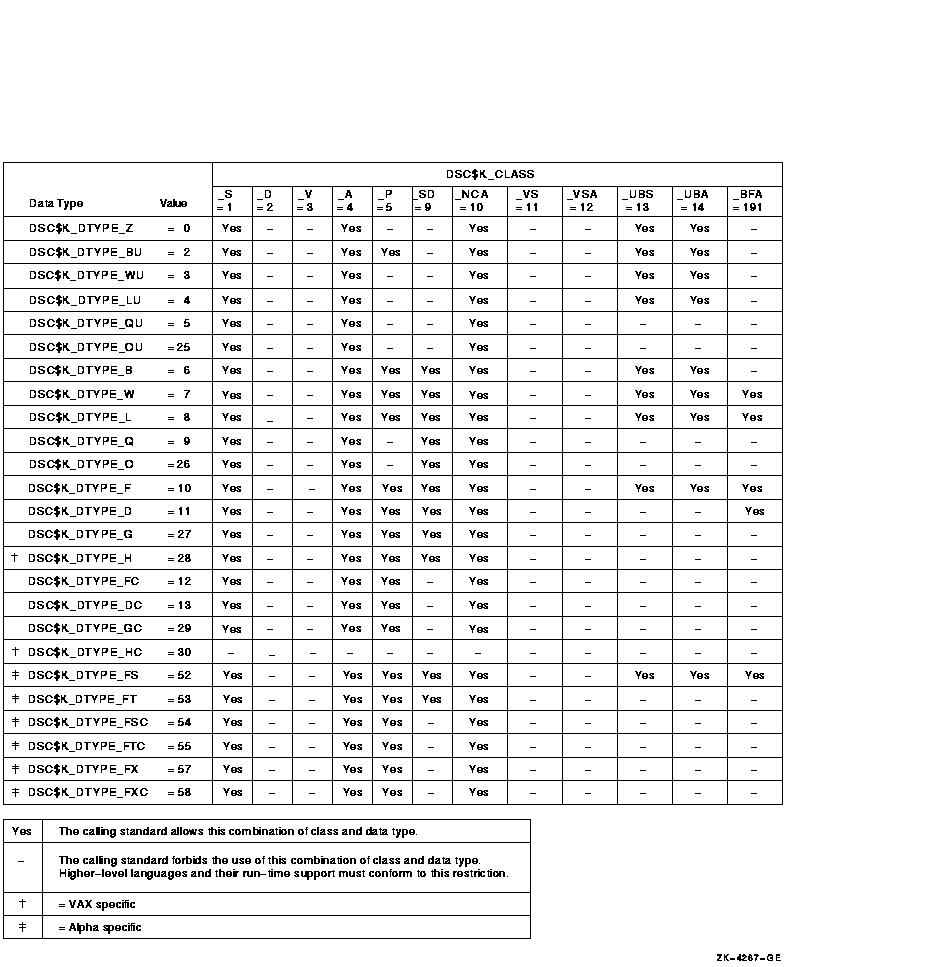
Figure 18-10 String Data Types and Descriptor Classes
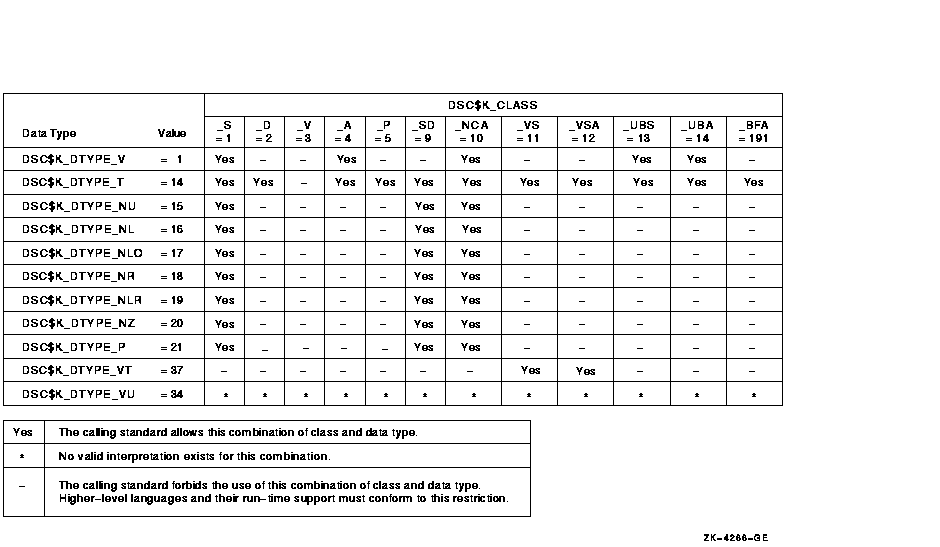
Figure 18-11 Miscellaneous Data Types and Descriptor Classes
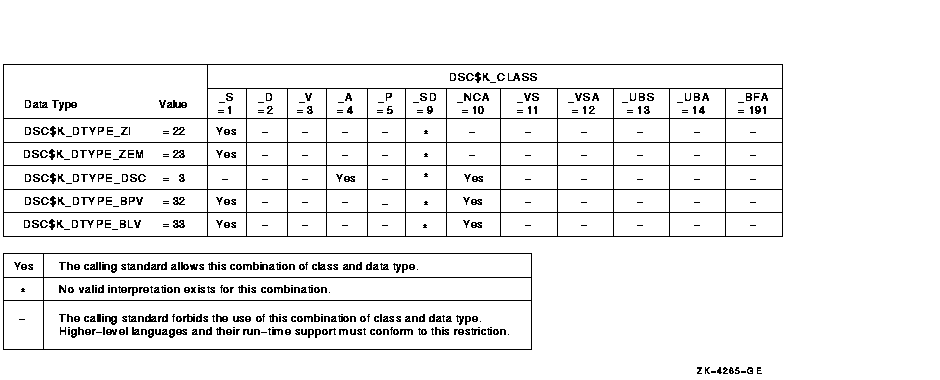
18.10 Return of the Function Value
A function is a routine that returns a single value to the calling
routine. The function value represents the value of
the expression in the return statement. As specified by the calling
standard, a function value may be returned as an actual value in R0.
On VAX systems, if the actual function value returned is greater than 32 bits, then both R0 and R1 should be used.
On Alpha systems, if the actual function returned is a floating-point value, the floating-point value is returned either in F0 or in both F0 and F1.
A standard function must return its function value by one of the following mechanisms:
These mechanisms are the standard return convention because they
support the language-independent data types. For information about
condition values returned in R0, see Section 18.11.
18.11 Return of the Condition Value
An OpenVMS system routine can indicate success or failure to the calling program by returning a condition value. In addition, an error condition to the calling program can return as a condition value in R0 or by error signaling.
A condition value in R0, also called a return status or completion code, is either a success (bit 0 = 1) value or an error condition (bit 0 = 0) value. In an error condition value, the low-order 3 bits specify the severity of the error (see Figure 18-12). Bits <27:16> contain the facility number, and bits <15:3> indicate the particular condition. Bits <31:28> are the control field. When the called procedure returns a condition value, the calling program can test R0 and choose a recovery path. A general guideline to follow when testing for success or failure is that all success codes have odd values and all error codes have even values.
Figure 18-12 Condition Value Format

When the completion code is signaled, the calling program must establish a handler to get control and take appropriate action. (See the OpenVMS Programming Concepts Manual or the OpenVMS Calling Standard for a description of signaling and condition handling and for more information about the condition value.)
| Previous | Next | Contents | Index |
![[Go to the documentation home page]](../../images/buttons/bn_site_home.gif)
![[How to order documentation]](../../images/buttons/bn_order_docs.gif)
![[Help on this site]](../../images/buttons/bn_site_help.gif)
![[How to contact us]](../../images/buttons/bn_comments.gif)
|
| privacy and legal statement | ||
| 5841PRO_052.HTML | ||